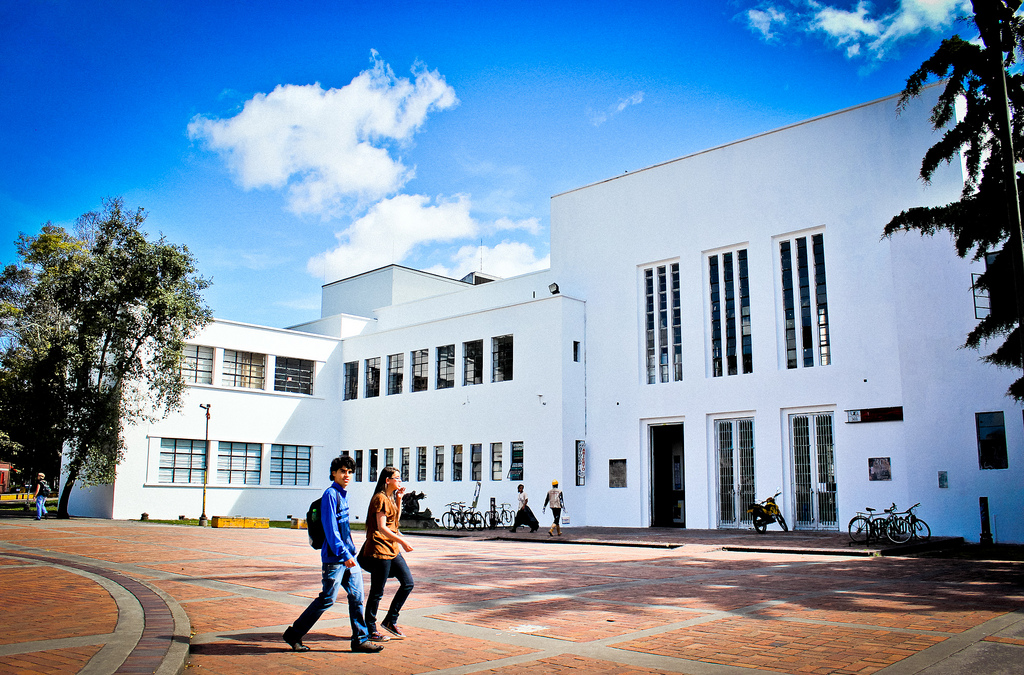Educational institutions in Bogota receive all the displaced students who arrive requesting enrollment (without asking for any identity documents) and place them in the grade they were studying.
By Alicia Romero Vázquez
alicia.romero@itesm.mx
Educational institutions are committed to recognizing and responding to students’ individual diversity, their needs, the way they relate to each other and the social dynamics they experience in their communities. They must also promote social justice, multicultural understanding and tolerance. Social, cultural and individual differences influence learning and our own concepts of inclusive education, equity, special education, learning problems and disabilities.
An example of how educational institutions can respond to the schooling needs of young people in adverse situations is the case of Colombia. The armed conflict in that country has left more than six million victims, where children and adolescents were affected most, because the majority live in rural areas and have had to move to urban areas to escape from the armed groups.
>
“Educational institutions must promote strategies of social justice, multicultural understanding and tolerance, to better deal with adverse situations such as the case of Colombia.”
Educational institutions in Bogota receive all the displaced students who arrive requesting enrollment (without asking for any identity documents) and place them in the grade the student mentions he/she was studying, since these young people have no official proof of education. Therefore, the State is under an obligation to design and implement public policies that guarantee access, permanence and educational quality for the child and adolescent victims of the armed conflict. This is an enormous challenge, because teachers need the tools to provide these students with attention and pedagogical orientation, seeking to incorporate them into the educational system and assure that these internally displaced children will not now be the victims of discrimination.
All students, regardless of their current social circumstances, must be treated fairly as people. For this reason, the school has to provide all the necessary tools for their academic development and also support them, and their families, psychologically. It is important to offer programs with extracurricular activities (perhaps with activities the students used to do in their own communities) to ensure their right to an education.
>
“We have to educate to teach students to recognize the diversity of the human being as a strength and create in them a commitment to action in situations of injustice, marginalization and inequality.”
Research conducted by the Ministry of Education in Bogota, Colombia, establishes three key dimensions: inclusion, school-displacement and pedagogical management. It proposes the implementation of a pedagogical attention route, divided into six interrelated phases, with the purpose of generating institutional transformation processes around the inclusion of students who are victims of the armed conflict in Colombia, through which a culture of peace is taught and fostered to discard all hate speech.
Although planning and development of new technologies are still important, due to the context, there are situations in which the comprehensive preparation of students as citizens of the world becomes a priority. Aware of the impact that governmental decisions have on educational contexts, our students will be the leaders of the future, which is why we must promote a culture against corruption and for peace.
I would like to invite you to participate as a teacher with a responsibility for the construction of a community of solidarity. In other words, educating to live in plural and multicultural societies, strengthening the sense of citizenship, recognizing the diversity of human beings as a strength, and creating in young people a commitment to act in situations of injustice, marginalization and inequality.
Our future depends on the leaders who will be at the head of institutions and nations. We should therefore seek to prepare leaders with the competencies and commitment to build a world with greater opportunities for everyone.
About the author
Alicia Romero Vázquez has a Master’s Degree in Education, specializing in Tutoring. She is the Director of the Inter-High-School Department of Languages at Tec de Monterrey High School and a full-time professor in the Spanish and Language Department, Campus Cumbres.
This article from Observatory of the Institute for the Future of Education may be shared under the terms of the license CC BY-NC-SA 4.0 
)
)


)